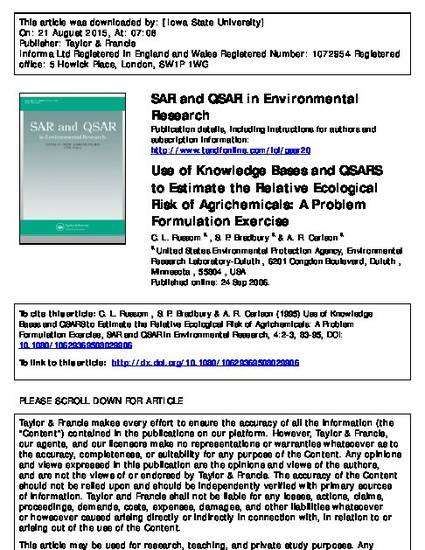
Ecological risk assessments can be used to establish the likelihood that an adverse effect will result from exposure to one or more chemicals. When evaluating contaminated sites with many chemicals present, risk assessors must grapple with the problem of quickly identifying the chemicals that are most likely to be of concern, based on effect and exposure assessment information. Many times data gaps exist and the risk assessor is left with decisions on which models to use to estimate the parameter of concern. In the present paper, a procedure is presented for ranking agrichemicals, utilizing the ASTER (ASsessment Tools for the Evaluation of Risk) system. The procedure was employed to rank the relative ecological risk of forty-nine pesticides historically used in agricultural sites in the Walnut Creek watershed near Ames, Iowa, USA. Empirical data from the ASTER system were used when available in the associated data-bases, and quantitative structure-activity relationships and expert systems were invoked when data were lacking. Separate rankings were conducted based on major species taxonomic groupings. Resulting toxic effects thresholds were compared to surface water concentrations.
- risk assessment,
- agrichemicals,
- QSAR,
- expert system,
- risk ranking,
- pesticides
Available at: http://works.bepress.com/steven_bradbury/30/
